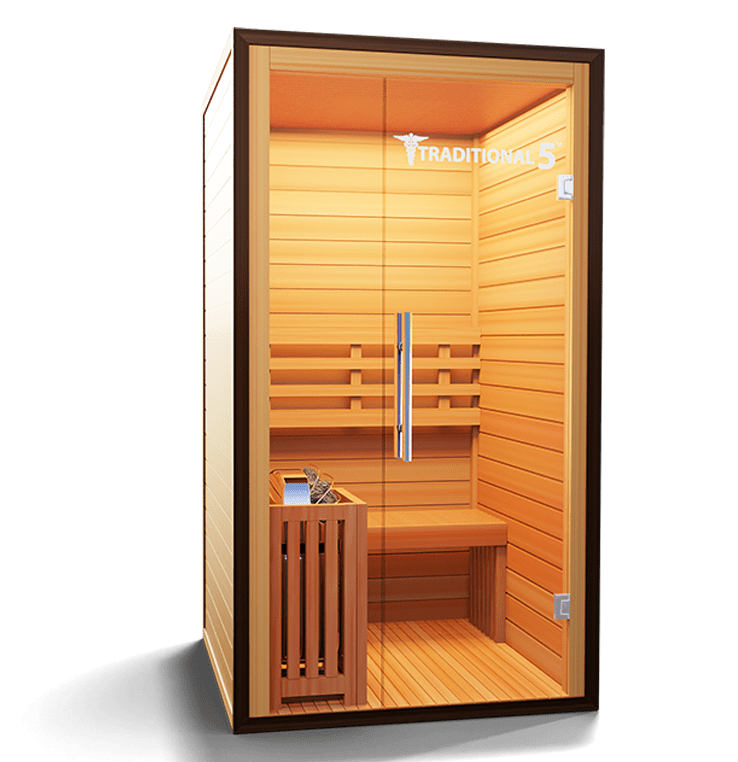Some Known Questions About Traditional Sauna.
Some Known Questions About Traditional Sauna.
Blog Article
4 Easy Facts About Traditional Sauna Explained
Table of ContentsSome Known Details About Traditional Sauna Indicators on Traditional Sauna You Need To KnowTraditional Sauna - An OverviewIndicators on Traditional Sauna You Need To Know
Many of the weight lost in a sauna is water loss and is re-gained upon rehydrating. Nonetheless, undoubtedly sauna can be a fundamental part of a healthy weight management program. To consider the distinctions between standard and IR saunas, I will certainly divide these into proven, academic, and made distinctions.Therefore, the most popular point in the saunawhich goes to the ceiling directly above the sauna heateris usually in between 185 and 190 F. Traditional Sauna. Claims that a typical sauna surpasses 200 F is simply not true and not relevant for electrical saunas offered in the United States. The temperature level for a far-infrared sauna is typically set between 120 and 140 F; nonetheless, unlike the traditional sauna, the objective in and IR space is not to achieve a heat
Due to this, the temperature level difference is practically irrelevant, considering that profuse sweating leads to both sauna types, but the method of heating the body is different. In an IR sauna the bather will really feel hot and will sweat a lot, however at a lot lower temperatures. Hence, if the objective is to invest longer time periods in the sauna, the IR sauna is a great choice.

The Single Strategy To Use For Traditional Sauna
When the high temperature is accomplished, the elements cycle on and off to keep the heat. Most standard sauna customers appreciate pouring water over the rocks to create heavy steam to increase sauna humidity degrees. The advantages of pouring water over the rocks consist of: making the space much more comfortable, dampening the nasal passages, and enabling the usage of aromatherapy by blending vital oils with the water.
In a far-infrared sauna, the warmth waves penetrate the body to successfully heat the body and elevate the body core temperature level. To accomplish this boosted temperature, Far-infrared emitters create infrared energy which is close to the same wavelength as that which the body naturally emitsoften described as the "Important Array" of 7 to 14 microns), so the power is well received by the body.
When the energy gets in the body, it triggers the body temperature level to raise and ultimately results in sweating. In an infrared sauna it is necessary for the emitters/heaters to continue to be on nearly frequently. Since there is no mass of rocks to keep heat, the sauna will cool down Find Out More if the emitters turned off.
As mentioned above, the sauna bather in an infrared room intends to place himself in front of operating emitters to obtain maximum advantage from the warm. The home heating time for both rooms can be really different, depending on how the spaces are made use of. For a conventional sauna, a bather needs to permit 30-40 minutes for the area to attain a desired temperature level and to properly pre-heat the rocks.
Unknown Facts About Traditional Sauna
A well built sauna will usually achieve a temperature level of 150-160 F in regarding 30-40 mins. For hotter temperature levels, the space may require to heat for a longer duration.
To some, 15 mins was "lost" while the infrared power heated up the timber panels instead of heating up a body, while others find a pre-heated room to be more comfy and think a raised beginning temperature level is necessary to begin perspiring. The length of suggested use for each and every room is roughly the same (10-15 minutes per session); however, because of the lower air temperature levels and the capability to really feel the effects of infrared warmth quicker than a conventional sauna, it is not uncommon for an individual to spend a total of 20-30 mins in an infrared sauna.
Typical saunas often tend to be larger (hence use even more electrical energy) than infrared saunas, although traditional saunas are absolutely readily available in one and two individual sizes. For a two-person typical sauna, 5x6 or 5x7 size is most preferred. The leading bench can easily seat two or three people and is likewise enough time to relax during the sauna session.


The typical cost per kWH of electrical power in the united state is approximately $0.11, so a 4.5 kW heating system will set you back approximately $.50 to compete one hour, if the heating system runs continually for one hour. Generally a sauna heating unit will compete 75% of the initial hour and 50% of subsequent hours on because the components cycle once the established temperature level is attained.
About Traditional Sauna
A 2 individual far-infrared room is normally physically smaller sized than a typical sauna, frequently about 4' x 4' or smaller. The IR heater is usually 1.5-1.7 kW utilizing a 120 volt 15 amp plug-in solution. Since the room can be used earlier than a sauna area, we will certainly think the space is utilized for to of an hour consisting of warm up time.
Finally, more there is a hardly ever discussed difference in the social experience between both areas. While our about his culture has lost a few of the social benefit of the standard sauna experience, it can be very socially rewarding. From family members time in the sauna, to heart-felt discussions with significant others, to sauna partiesthe conventional sauna experience can bring about intimate interacting socially.
Many greater end infrared spaces consist of colored light treatment, stereo and full-glass fronts. The dimension of most spaces permit 2 people to easily utilize the area, while some designs may permit for a third or 4th individual to utilize the room. Personalized infrared areas are additionally readily available, with room dimensions offered as much as 7' x 8' x 7' high.
Report this page